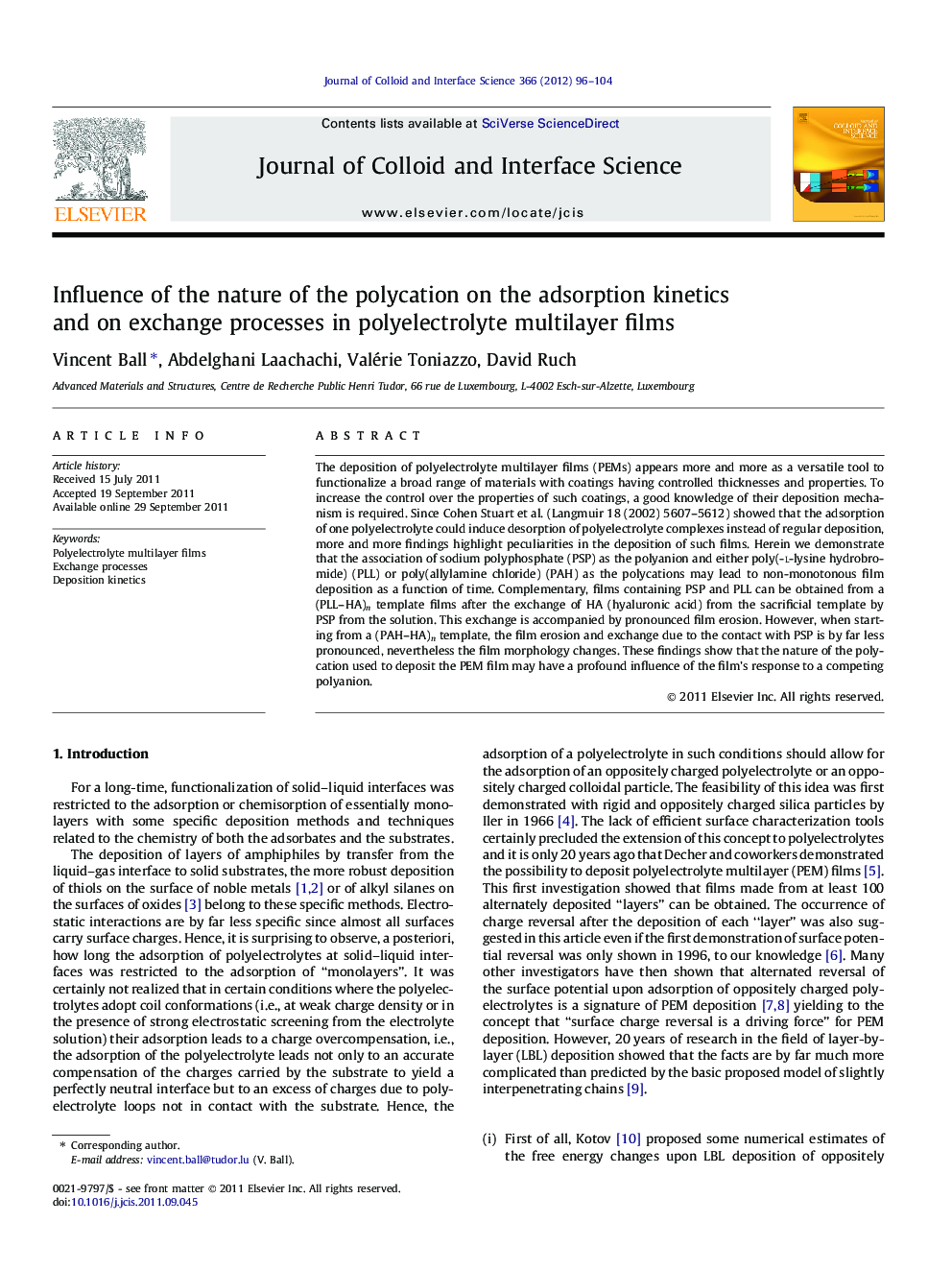| Article ID | Journal | Published Year | Pages | File Type |
|---|---|---|---|---|
| 608385 | Journal of Colloid and Interface Science | 2012 | 9 Pages |
The deposition of polyelectrolyte multilayer films (PEMs) appears more and more as a versatile tool to functionalize a broad range of materials with coatings having controlled thicknesses and properties. To increase the control over the properties of such coatings, a good knowledge of their deposition mechanism is required. Since Cohen Stuart et al. (Langmuir 18 (2002) 5607–5612) showed that the adsorption of one polyelectrolyte could induce desorption of polyelectrolyte complexes instead of regular deposition, more and more findings highlight peculiarities in the deposition of such films. Herein we demonstrate that the association of sodium polyphosphate (PSP) as the polyanion and either poly(-L-lysine hydrobromide) (PLL) or poly(allylamine chloride) (PAH) as the polycations may lead to non-monotonous film deposition as a function of time. Complementary, films containing PSP and PLL can be obtained from a (PLL–HA)n template films after the exchange of HA (hyaluronic acid) from the sacrificial template by PSP from the solution. This exchange is accompanied by pronounced film erosion. However, when starting from a (PAH–HA)n template, the film erosion and exchange due to the contact with PSP is by far less pronounced, nevertheless the film morphology changes. These findings show that the nature of the polycation used to deposit the PEM film may have a profound influence of the film’s response to a competing polyanion.
Graphical abstractFigure optionsDownload full-size imageDownload high-quality image (52 K)Download as PowerPoint slideHighlights► Dynamics of polyelectrolyte multilayer films. ► Deposition kinetics. ► Polyelectrolyte exchange processes. ► Film erosion.
